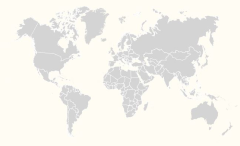Career
He worked as a bookkeeper at the sugar plantation and factory "Kremboeng", in Sidoarjo near Surabaya. He was also stamp and coin dealer in Surabaya. He became known for the alterations of stamps and postal stationery.
Besides philately, numismatics and his bookkeeping work in the sugar business, he was a researcher in the field of sugar cane.
In 1900 he founded the in which he was active as curator. The Dutch Tropen Museum has a painting of Moquette by January Pieter Veth.
Starting with a handmade postmark Moquette soon produced elaborate cachets, overprints and postal stationery. He sold his items to collectors and some stamp dealers like Jean-Baptiste Moens.
When the Dutch Indies U.P.U. foreign postal card rate was reduced to 7 1/2 cents on 1 April 1879 the 12 1/2 cent card was redundant.
Moquette provided a two line overprint in blue green reading "5 cent" and sent the cards to Europe for sale as a new surcharge variety. The Belgium dealer Moens was one of those to handle these cards and sold some of them in 1883 to collector Philipp von Ferrary. After 1890 there are no new records of Moquette creations.
Postal stationery is known with the cachet "Forwarded by Moquette Ketegan Soerabaja", little is known however about forwarding activities of Moquette.
In 1900 he founded the in which he was active as curator.




